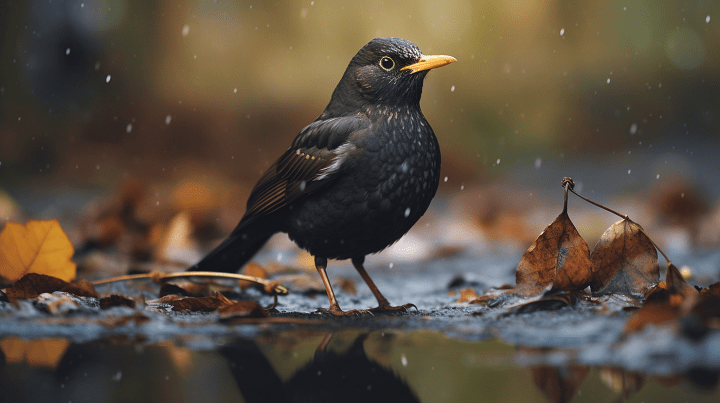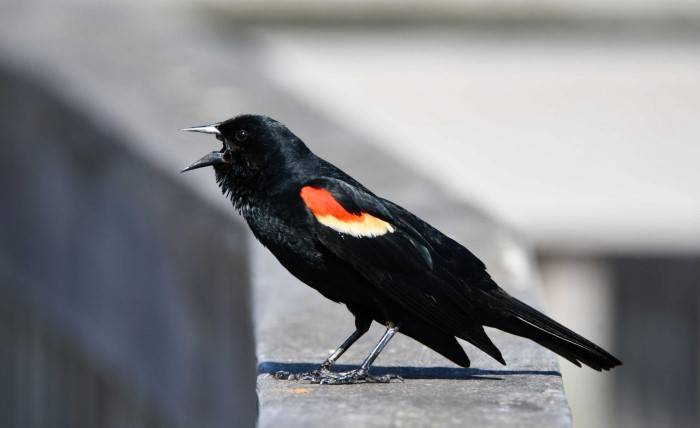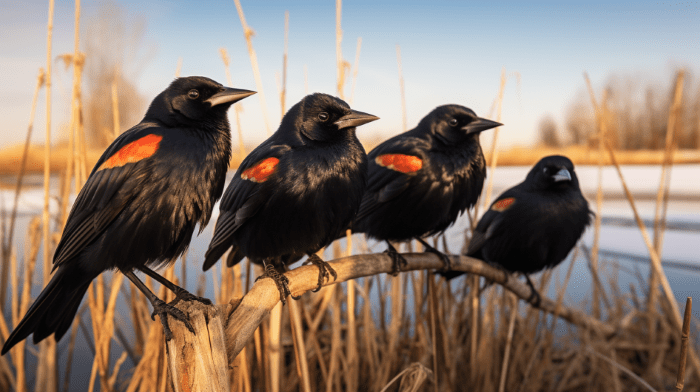In the serene tapestry of nature’s canvas, blackbirds stand out as charismatic and adaptable creatures that often find themselves in close proximity to humans. Their melodious songs and sleek, jet-black plumage have endeared them to many, leading to a natural curiosity about the extent of their awareness and recognition of the humans who share their environment. In this exploration, we delve into the fascinating realm of blackbird behavior and cognition to unravel the question: do blackbirds recognize humans? Through scientific insights, anecdotal evidence, and observations from the field, we aim to shed light on the complex relationship between blackbirds and humans and the intriguing mechanisms that underlie their interactions.
Understanding Blackbird Behavior and Social Dynamics
Territorial Nature:
Blackbirds, like many bird species, exhibit territorial behavior, with males fiercely defending their nesting territories during the breeding season. Their distinctive songs serve not only to attract mates but also to proclaim ownership of their territory and deter potential rivals.
Adaptability in Urban Environments:
Blackbirds have demonstrated remarkable adaptability to urban habitats, where they exploit a variety of food sources and nesting sites. In parks, gardens, and suburban neighborhoods, they have learned to coexist with humans, foraging for insects, fruits, and scraps while navigating the complexities of urban life.
Social Interactions:
Blackbirds are social birds that often form loose aggregations, particularly during the non-breeding season when they congregate in communal roosts. These gatherings provide opportunities for social interactions, vocal exchanges, and the sharing of information about food sources and potential threats.
The Role of Vocalizations in Communication
Song Recognition:
Blackbirds are highly vocal birds, with males singing to establish territories and attract mates. Research suggests that they possess the ability to recognize the individual songs of neighboring conspecifics, enabling them to distinguish between familiar and unfamiliar individuals within their vicinity.
Human Vocalizations:
While blackbirds primarily communicate with members of their own species through vocalizations, they may also respond to human vocalizations, particularly if they associate them with specific behaviors or interactions, such as the provision of food or the presence of potential threats.
Anecdotal Evidence and Observations
Feeding Relationships:
Many bird enthusiasts have reported developing close relationships with individual blackbirds, often through the regular provision of food in garden feeders or bird tables. Over time, some blackbirds may become accustomed to the presence of specific humans and even approach them for food.
Behavioral Responses:
Observations of blackbird behavior in response to human presence vary widely, with some individuals exhibiting skittishness and avoidance, while others appear more tolerant and even curious. Factors such as previous experiences, habituation, and the context of the interaction may influence their reactions.
Cognitive Abilities and Recognition Mechanisms
Visual Recognition:
Blackbirds are believed to possess advanced visual processing abilities, allowing them to recognize familiar individuals based on visual cues such as body size, shape, and plumage patterns. This recognition may extend to humans, particularly if they have frequent and consistent interactions with specific individuals.
Associative Learning:
Blackbirds are capable of associative learning, whereby they form associations between specific stimuli and outcomes. For example, they may learn to associate the presence of humans with the availability of food resources and adjust their behavior accordingly.
Do Blackbirds Recognise Humans
Research Challenges and Future Directions
Experimental Studies:
While anecdotal evidence and observational studies provide valuable insights into blackbird behavior, further research using controlled experimental approaches is needed to rigorously assess their ability to recognize individual humans and understand the cognitive mechanisms underlying such recognition.
Long-Term Monitoring:
Long-term monitoring of blackbird populations in urban and suburban environments, combined with behavioral observations and ecological studies, could provide valuable data on their responses to human activities and the factors influencing their behavioral flexibility and adaptation.
Related Post:
Deciphering the Ideal Space Requirements for Ducks
Unveiling the Mysterious Egg-Laying Habits of Ducks
Exploring the Essential Role of Duck Grit in Avian Health
The question of whether blackbirds recognize humans is a fascinating topic that offers a glimpse into the complex interplay between animal cognition, social behavior, and environmental dynamics. While scientific research on this subject is ongoing, anecdotal evidence and observations from the field suggest that blackbirds possess a remarkable capacity for learning, adaptation, and social interaction, which may include recognition of individual humans under certain circumstances.
As stewards of the natural world, it is essential that we approach our interactions with blackbirds and other wildlife with respect, empathy, and a commitment to coexistence. By fostering mutual understanding and appreciation for the creatures that share our environment, we can create harmonious relationships that benefit both humans and wildlife alike. Whether through mindful observation, responsible feeding practices, or habitat conservation efforts, let us embrace the wonder of the natural world and strive to nurture a world where blackbirds and humans can thrive together in harmony.




